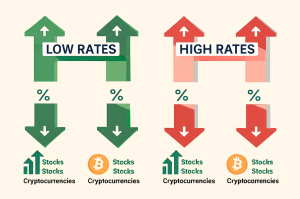
The Google News Newspaper Archive stands as a monumental digital gateway to the past, offering a treasure trove of historical headlines, cultural insights, and societal reflections. This initiative, launched by Google in 2008, has revolutionized the way we access and interact with historical news, making it an invaluable resource for researchers, journalists, genealogists, and curious minds alike. The archive’s vast collection of digitized newspapers spans from the mid-19th century to the late 20th century, capturing a period rich with world events, cultural shifts, and everyday life. This digital repository not only preserves the printed word but also offers a unique window into the past, allowing users to explore the nuances of historical narratives.
One of the most compelling aspects of the Google News Newspaper Archive is its ability to democratize access to historical information. Previously, accessing old newspapers required physical visits to libraries or archives, often limited by geographical constraints and the availability of microfilm. The digital archive eliminates these barriers, making it possible for anyone with an internet connection to delve into the past. This accessibility is particularly beneficial for genealogists, who can now easily search for birth notices, wedding announcements, and obituaries to trace their family histories. Journalists and students also benefit from the archive, as it provides direct evidence and contemporary perspectives on historical events, enriching their research and writing.
The archive’s search functionality is a standout feature, combining full-text search with visual browsing. Users can input specific dates, names, events, or places to retrieve relevant articles, often accompanied by an interactive timeline. This feature is invaluable for historians seeking to understand not just the content of the news but also how stories were framed and prioritized in their original context. The authenticity of scanned pages, complete with original typography, photographs, and occasional printing errors, adds a layer of texture and authenticity to the experience. However, the archive is not without its limitations. The digitization process relies heavily on Optical Character Recognition (OCR), which can struggle with faded ink or densely packed text, particularly in older newspapers. This can result in garbled text and less precise keyword searches. Additionally, copyright constraints mean that not every newspaper or issue is available, leaving notable gaps in the archive.
Despite these challenges, the Google News Newspaper Archive remains a powerful tool for exploring the past. Its broad scope, which includes both iconic broadsheets and obscure local papers, offers a nuanced and unvarnished portrait of different eras. The archive captures everything from major world events to the mundane details of everyday life, providing a comprehensive view of historical contexts. This breadth is particularly valuable for writers, including biographers, historical novelists, and screenwriters, who can use vintage classified ads, editorials, and other period details to inject authenticity into their work. The simply curious also find the archive to be a fascinating resource, allowing them to explore what made the front page on a specific day or how local events were viewed nationally.
The Google News Newspaper Archive is part of a broader movement to digitize news media, joining other significant resources like Chronicling America, hosted by the Library of Congress, and the British Newspaper Archive. These initiatives share the goal of preserving historical news for future generations, but Google’s archive stands out due to its scale, global ambition, and free access. While it has not digitized every newspaper or preserved every scrap of newsprint, its extensive collection reveals trends, local echoes of global events, and the ordinary miracles of daily life. The archive’s potential is further enhanced by the possibility of future advancements in machine learning, which could help correct OCR mistakes and bring context to ambiguous searches. Crowdsourced corrections, where users can fix mangled text or annotate clippings, could also improve the archive’s accuracy and usability.
In conclusion, the Google News Newspaper Archive is more than just a collection of old headlines; it is a testament to human memory and a reminder of the enduring relevance of historical news. By preserving and making accessible the stories of the past, the archive allows us to understand the unbroken thread between past and present. Each digitized column brings a lost voice into dialogue with the living, making history more tangible and turning daily news into something far more permanent. As long as people seek context, empathy, and the reassuring strangeness of lives lived before their own, the preserved news of yesterday will continue to find new relevance—just a click away. The archive stands as a powerful tool for learning, discovery, and digital time travel, offering a glimpse into the past that enriches our understanding of the present and future.





